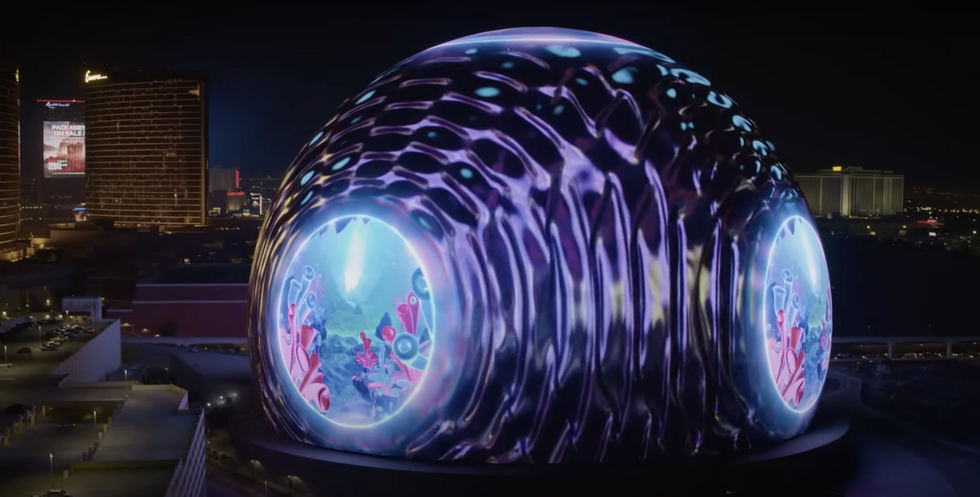
As we covered when news of The Sphere’s first film was announced, Darren Aronofsky’s Postcards From Earth has proven to truly be one of the biggest marvels of modern cinematography. And not just because of its ambitious scope, but also—quite simply—by its sheer technical achievement.
Let’s take a deeper look at this one-of-a-kind 18K camera—dubbed the Big Sky camera—and explore how it was developed to record footage designed to be shown on The Sphere’s 160,000 square foot LED screen at the highest pixel resolution (19,000×13,500) in the world.
Behind the Scenes with the Big Sky Camera
Thanks to a new behind-the-scenes featurette produced by the Wall Street Journal, which you can watch below, we now have many more details about this new Big Sky camera system and how it works. We knew it was massive and that it reportedly took a 12-person crew to work, but many of the technical specs and features were left unknown.
From the looks of it, though, this 18K Big Sky camera was developed specifically to be used for films shot for The Sphere and its wildly large screen. The camera itself faced many challenges, namely how to capture such wide angles and how to simply reach the highest levels of super-resolution.
To address these challenges, the Big Sky camera was designed to feature wide angles with a fisheye lens that is almost 12”/30.48 cms across. This circular and linear design is able to distort the view so the widest angle possible can be captured in a circle.
Also, the camera was designed with a square 18K x 18K large sensor to help this circular image fit more perfectly into the square as a way to eliminate any wasted pixels. Together with the lens, this sensor is able to capture the full scope of the footage needed for The Sphere’s ginormous screen.
The Marvel of The Sphere Itself

While this is obviously just one screen at one place in Las Vegas, The Sphere has captured the world’s attention if not simply by its sheer scope and scale. The Sphere itself is the largest spherical structure in the world, standing at 366 feet tall and 516 feet wide at its widest point. The theater seats 17,500 people (with 10,000 of those seats being the haptic seats complete with sound vibration).
However, the true marvel is the 160,000 square foot LED screen with its 19,000×13,500 pixel resolution, the highest in the world. Which, of course, helps it become perhaps the most immersive experience ever known to man.
Still, with a screen 20 times larger than an IMAX screen, the innovative engineering needed to produce content for this screen has been a huge challenge. Before the Big Sky camera, a team of engineers had to weld 11 cameras together just to get footage for the screen. However, thanks to the Big Sky camera, its technical wizardry has now been able to seamlessly integrate 11 different perspectives into a singular view.
The Future of Big Sky Cinematography
What’s still to be seen, though, is simply what will come of this new camera and screen combination next. Darren Aronofsky certainly seems like a good choice for the camera and theater’s maiden voyage with his Postcards From Earth film. However, many are now wondering what comes next.
Even with the Big Sky camera, the challenges are quite immense. It takes a 12-person team to man the camera and it takes quite a bit of planning, at least for anything scripted, as the field of view extends almost behind the lens—which means productions and sets will need to be giant and immersive themselves.
The next projects will undoubtedly need to make use of tons of other technologies, like VR, for example, just to produce anything besides documentary-style productions. However, with such a large seating array, and with so much marketing behind The Sphere itself, we’re excited to see who takes on the challenge next—and what they’re able to dream up for it.
Author: Jourdan Aldredge
This article comes from No Film School and can be read on the original site.
